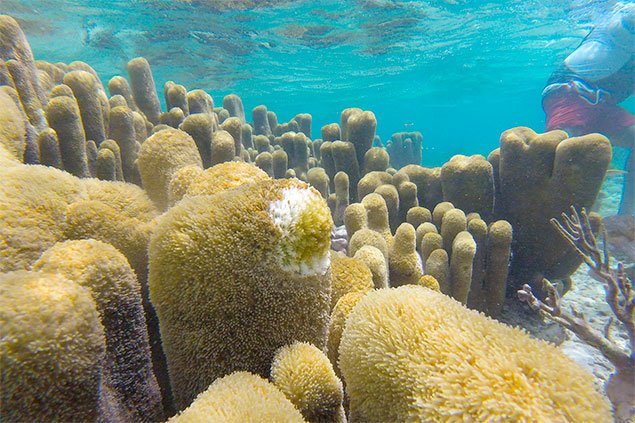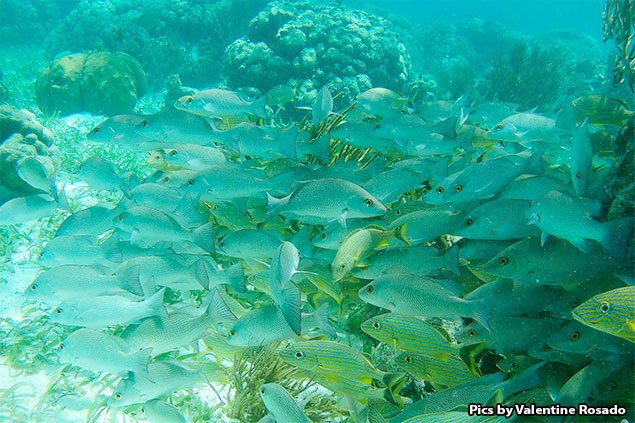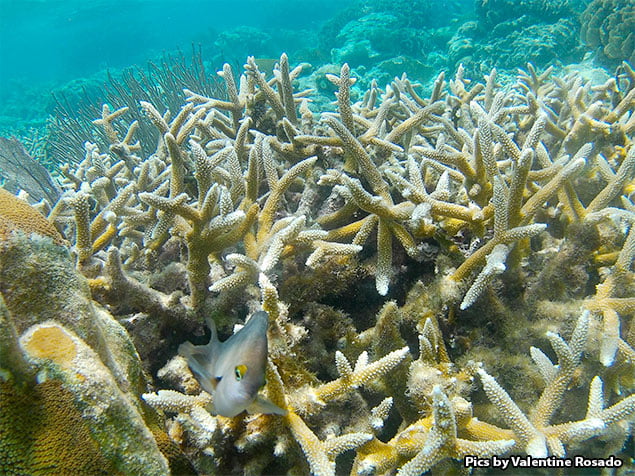“San Pedro’s pillar garden is gone forever,” these are the words of Valentine Rosado a Belizean biodiversity scientist/environmentalist, who pointed out about a week ago that a patch of coral just in front of San Pedro Town, Ambergris Caye is dead and will not recover. “I first saw this unique shallow-stand of pillar corals about 14 years ago,” commented Rosado on a Facebook Post. “It is located right in front of town, but only a handful of locals really knew about these interesting corals.”



Rosado pointed out that this past year coral disease has hit the Meso American Barrier Reef really hard. “In a matter of weeks all of them were completely dead,” commented Rosado about the pillar coral. “Nothing we can do,” they say. “The disease is all over,” they say. However, there is much that we CAN do— I say. We just gotta put our heart to it.”
Earlier in June 2021, Hendrix biology faculty members Dr. Jenn Dearolf and Dr. Adam Schneider traveled with 16 students from Dearolf’s Marine Biology class on a 10-day trip to San Pedro, Belize, on the island of Ambergris Caye.
Sadly, they also observed the skeletons of pillar coral (Dendrogyra cylindricus), a unique type of coral pointed out by Rosado on his post. There were two large stands of this coral directly in front of San Pedro. Both stands were thriving in March 2020, when the directors of Belize Tropical Research and Education Center (TREC), the facility at which Dr. Dearolf’s group stayed, had to leave the island because of covid-19. When they returned this May and visited the site with her group, the coral was dead. Currently, it is unclear why this coral died, but it has been struggling throughout the Caribbean and on the Florida reefs.
To help preserve corals, Dr. Dearolf and her students are studying environmental conditions conducive to the growth of elkhorn coral (Acropora palmata), another important coral species in the Caribbean. Elkhorn and staghorn coral (A. cervicornis) are the major reef builders in this region.
For their study, Dr. Dearolf’s students measured the height and width of coral stands at sites where this coral is abundant and where it is not. They also recorded environmental parameters (e.g., light levels, current speeds, and water temperature) and collected water samples. The water samples are analyzed for the concentrations of ions that are important for the growth of the coral.
Rosado Points Out That Hol Chan Marine Reserve Looks Horrible Too
“There is no other way of describing what I saw,” commented Rosado. “Hol Chan is my favorite dive site of all time, and I never get bored of diving there. But, for some reason, the last time I visited the site was about 3 years ago. Today, it looks like the perfect site to study coral disease, fleshy macro-algae, cyanobacteria, sediment mats and coral-killing invertebrates.
Hol Chan has long been considered a global example of how a marine reserve results in a thriving coral haven, teaming with rich marine life. Maybe someone has been ‘asleep at the wheel’ or the global threats to biodiversity ‘caught us with our pants down.’ No se! But, something has to been done because the tourists are coming to our island expecting the product we promised. We gotta be able to show more corals and less algal mats.”

Rosado is still optimistic about healing our coral reef and pointed out that he did get pictures of some very cool corals that are fighting for survival, despite everything they are dealing with.
“There is hope,” he says.
“The coral disease and other human threats are affecting all the reefs of Belize. However, we have been teaching our tour guides and young children (for years), that places like Hol Chan will serve as safe refuge for marine life. These areas will thrive and then the corals and fish will ‘populate’ nearby areas that are degraded. But, if these sites are as degraded as the non-protected sites, then we somehow ‘dropped the ball’ a long time ago.”



Hol Chan still has some very promising stands of elkhorn and staghorn corals (two of the species that are not affected by the stony coral disease), Rosado points out. There are also several stony corals that seem to be fighting the disease, as reported by experienced tour guides.
“The tourists keep flocking to Hol Chan, as we recover from covid-19 (because of the site’s long-standing popularity). Hence, there is still hope. But, we must collectively accept that the situation is dire and come up with real solutions— quickly.”











